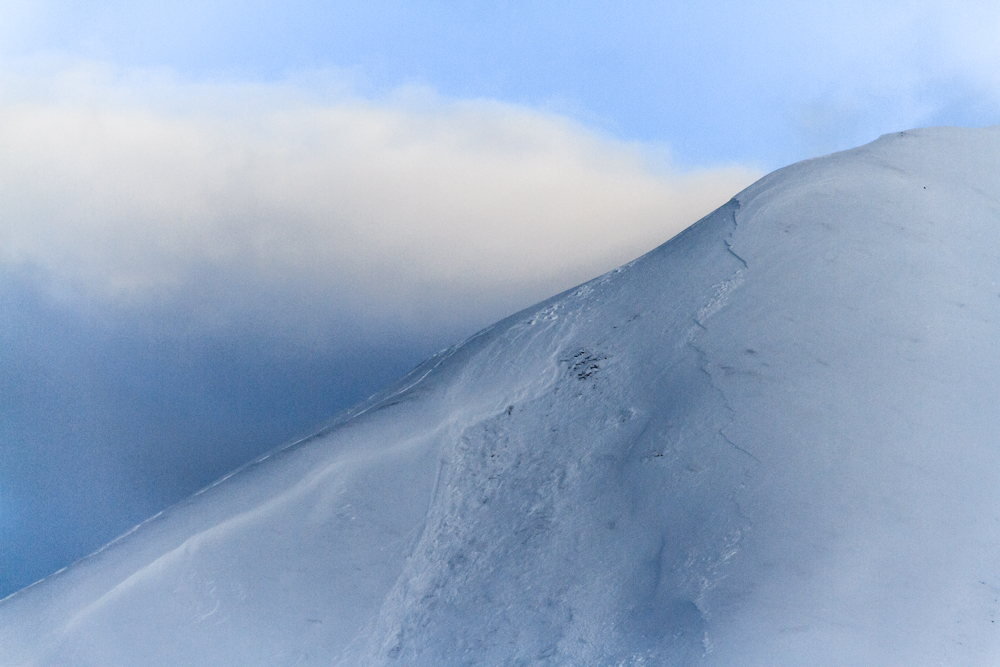Turnagain Pass
|
|
There is a CONSIDERABLE avalanche danger above treeline surrounding Turnagain Pass, Girdwood Valley and Summit Lake on the Kenai. A 1-2′ slab is sitting on weak unstable snow where human triggered avalanches are likely on steep slopes in the alpine, above 2000′. Careful snowpack evaluation, cautious route finding and conservative decision-making are essential in all areas above the trees today.
A MODERATE avalanche danger remains in the trees and lower elevations where triggering fast moving sluff or a 12 € slab is possible on steep terrain features. Remember to avoid terrain traps where an avalanche of any size could have high consiqences.
Join CNFAIC Forecaster Aleph Johnston-Bloom for a discussion on the Turnagain Pass snowpack TONIGHT at Blue and Gold Boardshop in Anchorage from 7pm-8:30pm. Learn about how this season’s snowpack has developed and what can we expect for the holidays.
***Carter Lake and Snug Harbor areas are open to motorized use starting today, Tuesday Dec. 20th. Please respect other closures across the Forest. The Forest Service is monitoring conditions daily and will open more areas just as soon as there is enough snow to prevent resource damage to underlying vegetation. Thanks for your patience!
OUTSIDE AREAS: Recent snowfall has created dangerous avalanche conditions around Southcentral and Interior, Alaska. Keep this in mind if you are headed to Snug Harbor and Carter today and please send in an observation if you see any obvious signs of instability. Check out these avalanche observations from Hatcher Pass and Petersville region where recent avalanche activity was observed over the weekend.


